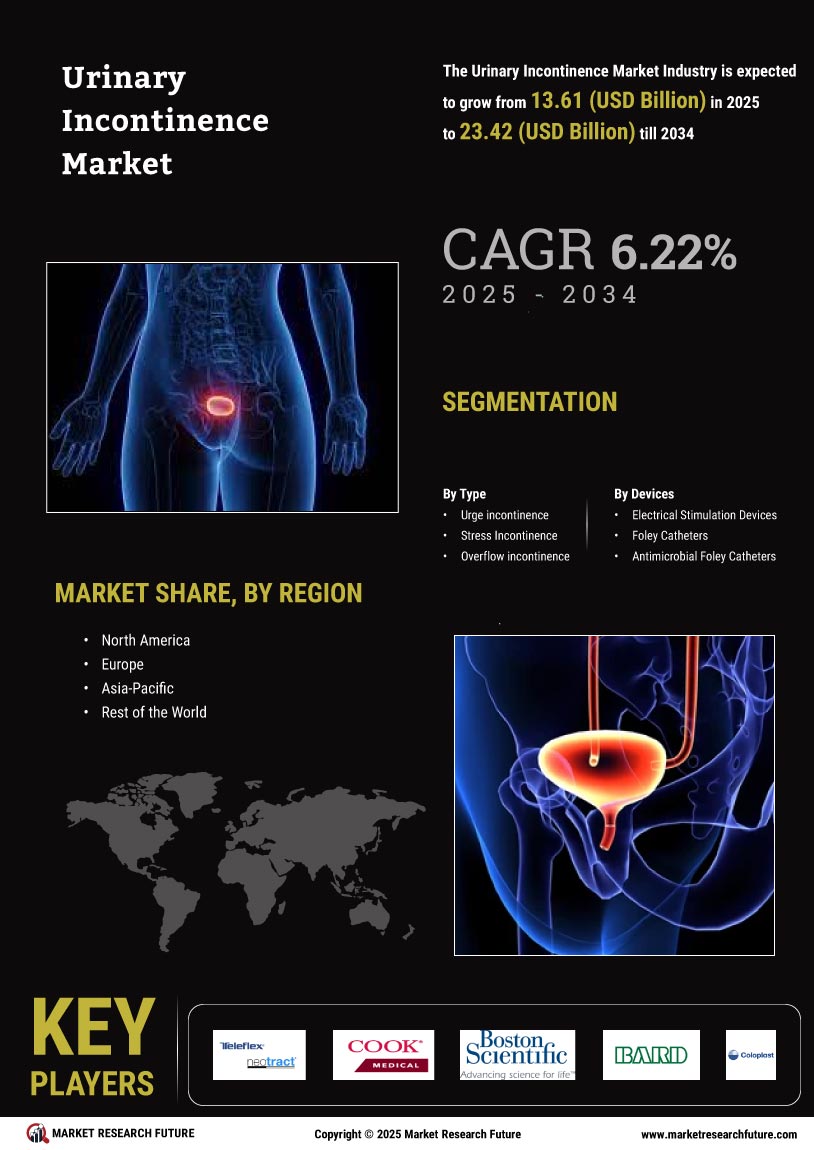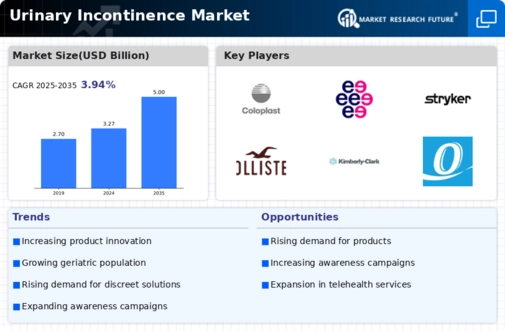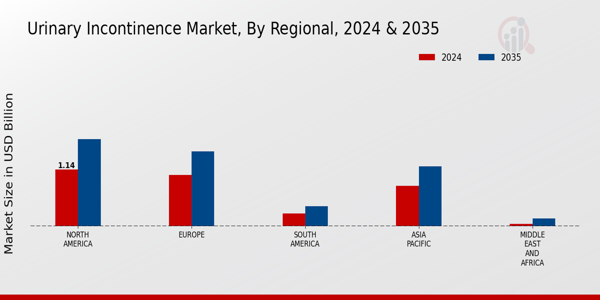Market Growth Projections
The Global Urinary Incontinence Market Industry is projected to experience robust growth in the coming years. By 2024, the market is expected to reach 3.27 USD Billion, with further growth anticipated to 5 USD Billion by 2035. This trajectory indicates a compound annual growth rate of 3.94 percent from 2025 to 2035. Such projections highlight the increasing demand for urinary incontinence solutions, driven by factors such as technological advancements, demographic shifts, and heightened awareness. The market's expansion reflects the urgent need for effective management strategies to address the challenges faced by individuals living with urinary incontinence.
Growing Geriatric Population
The global increase in the geriatric population is a significant factor influencing the Global Urinary Incontinence Market Industry. As individuals age, the likelihood of experiencing urinary incontinence rises due to physiological changes and comorbidities. According to demographic projections, the number of people aged 65 and older is expected to double by 2050, creating a larger market for urinary incontinence solutions. This demographic shift is likely to drive demand for various products, including absorbent pads, medications, and surgical interventions. Consequently, the market is poised for substantial growth as the needs of this aging population become more pronounced.
Increased Awareness and Education
Increased awareness and education regarding urinary incontinence are crucial drivers of the Global Urinary Incontinence Market Industry. Public health campaigns and educational initiatives are helping to destigmatize the condition, encouraging individuals to seek treatment. This shift in perception is vital, as many people suffer in silence due to embarrassment. As awareness grows, more individuals are likely to consult healthcare professionals, leading to higher demand for products and services. This trend is expected to contribute to a compound annual growth rate of 3.94 percent from 2025 to 2035, as more people recognize the importance of addressing urinary incontinence.
Advancements in Treatment Technologies
Technological advancements in treatment options for urinary incontinence are propelling the Global Urinary Incontinence Market Industry forward. Innovations such as minimally invasive surgical techniques, neuromodulation therapies, and advanced absorbent products are enhancing patient outcomes. For example, the introduction of new devices and surgical methods has improved efficacy and reduced recovery times. As a result, the market is projected to grow to 5 USD Billion by 2035, driven by these advancements. Furthermore, ongoing research and development efforts are likely to yield even more effective solutions, thereby expanding the market and improving quality of life for patients.
Rising Prevalence of Urinary Incontinence
The increasing prevalence of urinary incontinence among various demographics is a primary driver of the Global Urinary Incontinence Market Industry. Factors such as aging populations, obesity, and chronic conditions contribute to this rise. For instance, it is estimated that by 2024, the market will reach 3.27 USD Billion, reflecting the growing need for effective management solutions. The World Health Organization indicates that urinary incontinence affects a significant portion of older adults, with prevalence rates ranging from 15 to 30 percent. This trend underscores the urgency for innovative products and services tailored to address the needs of affected individuals.
Regulatory Support and Reimbursement Policies
Regulatory support and favorable reimbursement policies are essential drivers of the Global Urinary Incontinence Market Industry. Governments and health organizations are increasingly recognizing the need for effective management of urinary incontinence, leading to the establishment of supportive frameworks. For instance, many countries are implementing reimbursement policies that cover the costs of treatments and products for urinary incontinence. This support not only alleviates the financial burden on patients but also encourages manufacturers to innovate and expand their offerings. As a result, the market is likely to experience sustained growth, driven by these favorable conditions.












